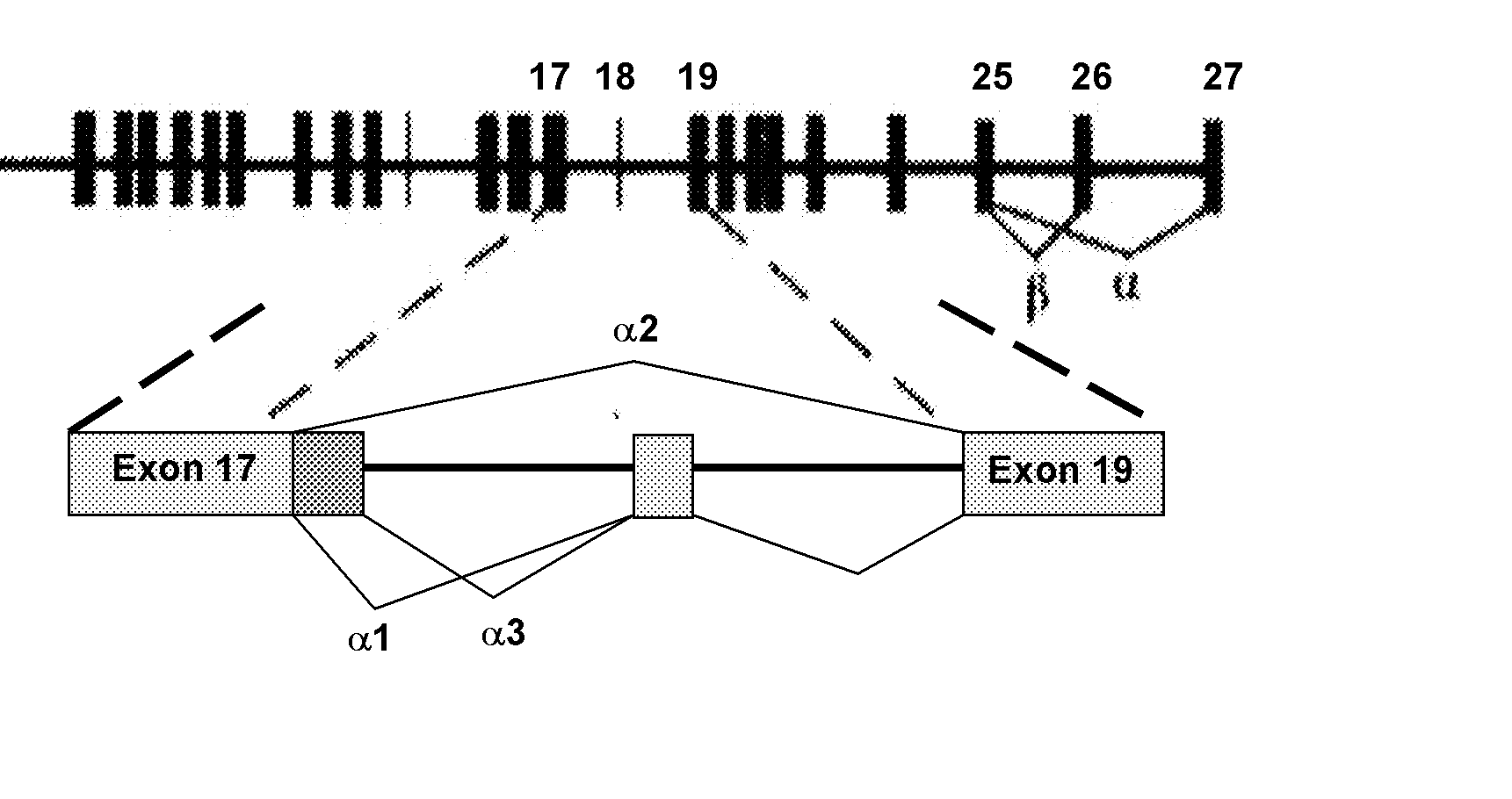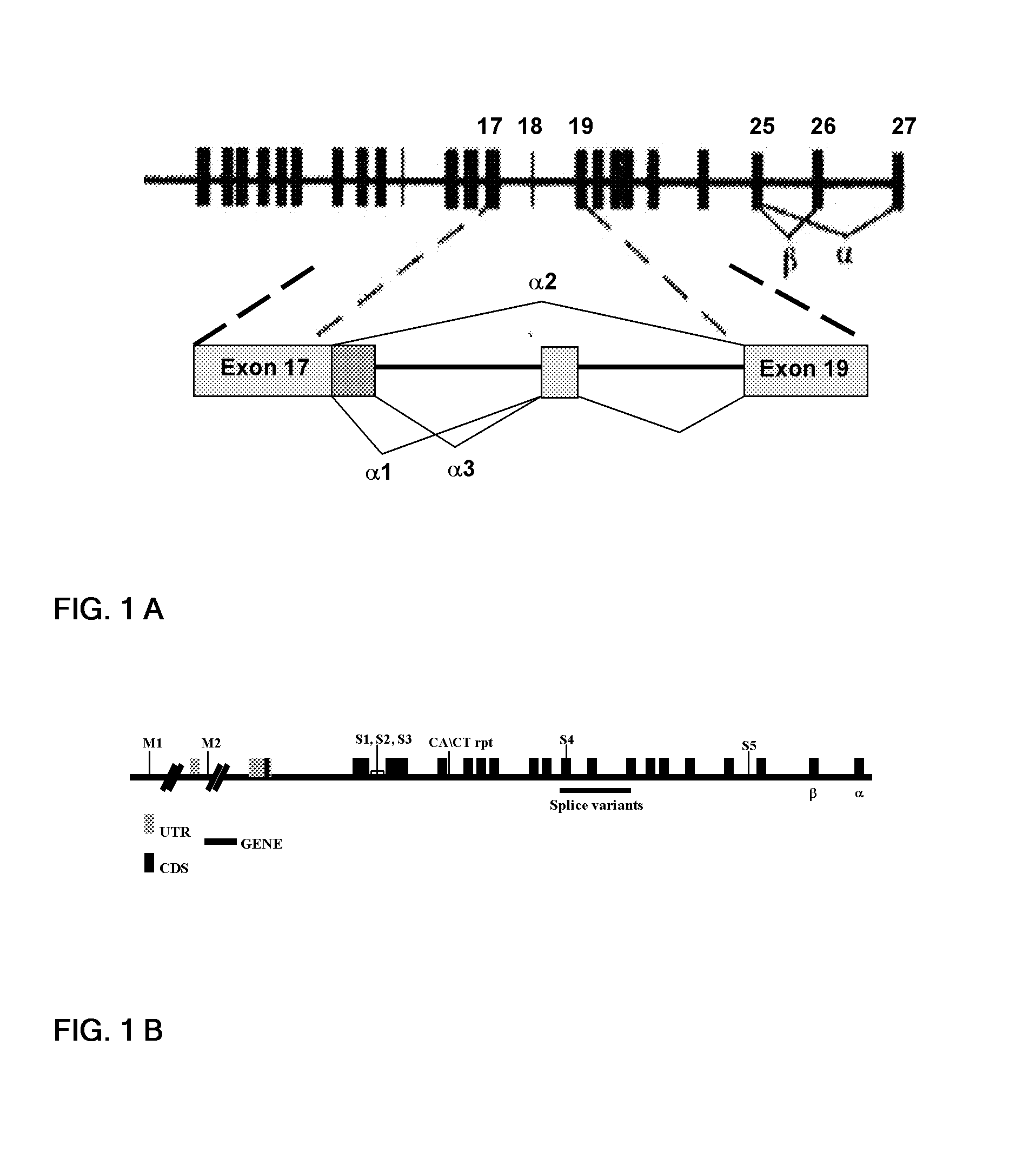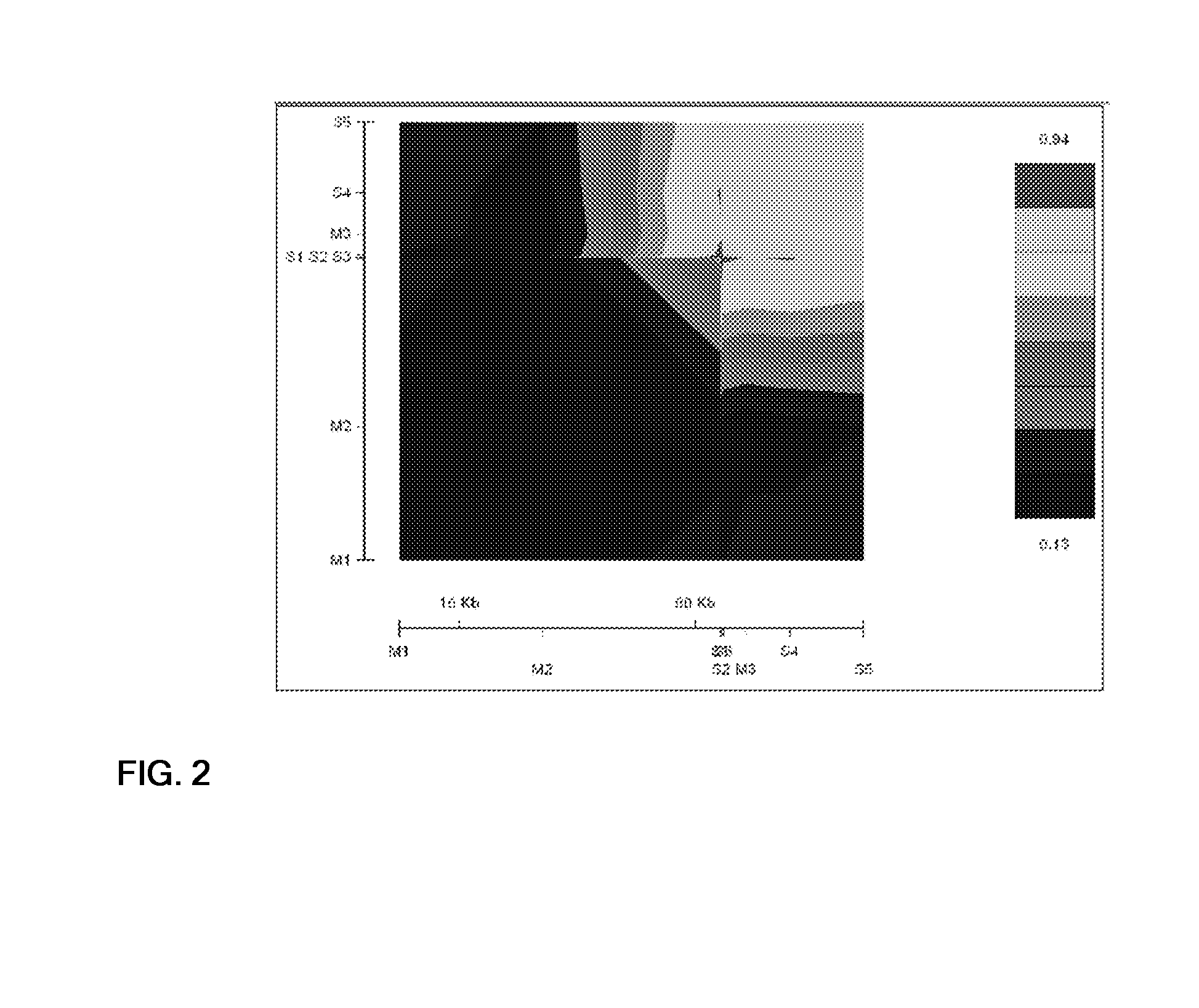Genetic variants of human inositol polyphosphate-4-phosphatase, type i (INPP4a) useful for prediction and therapy of immunological disorder
a technology of inositol polyphosphate and gene variant, which is applied in the field of gene variants of human inositol polyphosphate 4phosphatase (inpp4a) that are useful for the prediction and treatment of immunological disorders, and can solve the problem that no studies have been done to date to study the genetic role of inpp4a in immunological disorders
- Summary
- Abstract
- Description
- Claims
- Application Information
AI Technical Summary
Benefits of technology
Problems solved by technology
Method used
Image
Examples
example 1
[0204] Association of D2S2311 Repeat Locus with Atopic Disorders Such as Asthma:
[0205] The 401 bp DNA stretch of SEQ ID No. 1 of INPP4A gene having the D2S2311 repeat polymorphism was PCR amplified using novel primers of SEQ ID No. 7 and 8. PCR amplification of genomic DNA samples isolated from peripheral blood leukocytes of the atopic asthmatic patients and normal control individuals was done using the above said primers in a pooled reaction. PCR was carried out in a total volume of 5 μl containing 25 ng of genomic DNA, 1.0 pmol each of 6-FAM-labeled reverse primers and non-labeled forward primers, 1.5 Mm MgCl2, 0.25 mM of each dNTP, 0.03 U / μl of Taq DNA polymerase (Bangalore Genie, India) and the buffer recommended by the supplier. After PCR, 1 μl of the PCR product was loaded with and internal size standard (PET labeled) on ABI Prism 3100 Genetic Analyzer (Applied Biosystems). Fragment lengths were determined using the (Genotyper 3.7, Applied Biosystems). PCR was set up with the...
example 2
[0206] Association of +92031 A / T Polymorphism with Atopic Disorders Such as Asthma:
[0207] The 1036 bp DNA stretch of SEQ ID No. 4 of INPP4A gene having the +92031 A / T polymorphism was PCR amplified using novel primers of SEQ ID No. 13 and 14. The genotyping was done using SNaPshot. ddNTP Primer Extension Kit (Applied Biosystems, Foster City, USA). SnaPshot PCR was carried out using 50 ng purified PCR template, 1 pmol primer with SEQ ID 19 and ABI ready reaction mix and 1× dilution buffer (as supplied by the manufacturer). PCR was set up with the following conditions: 96° C. for 10 seconds, 58° C. for 5 seconds and 60° C. for 30 seconds for a total of 30 cycles. To clean up the primer extension reaction, 1 U of calf intestinal phosphatase (CIP) diluted in 10× NEB3 (New England Biolabs), was added to the reaction mixture and the mixture was incubated at 37° C. for 1 hour, followed by an incubation for 15 minutes at 72° C. for enzyme inactivation. These samples were subsequently elect...
example 3
[0208] Association of +110832 A / G Polymorphism with Atopic Disorders Such as Asthma:
[0209] The 961 bp DNA stretch of SEQ ID No. 5 of INPP4A gene having the +110832 A / G polymorphism was PCR amplified using novel primers of SEQ ID No. 15 and 16. The genotyping was done using SNaPshot. ddNTP Primer Extension Kit (Applied Biosystems, Foster City, USA). SnaPshot PCR was carried out using 50 ng purified PCR template, 1 pmol primer with SEQ ID 22 and ABI ready reaction mix and 1× dilution buffer (as supplied by the manufacturer). PCR was set up with the following conditions: 96° C. for 10 seconds, 58° C. for 5 seconds and 60° C. for 30 seconds for a total of 30 cycles. To clean up the primer extension reaction, 1 U of calf intestinal phosphatase (CIP) diluted in 10× NEB3 (New England Biolabs), was added to the reaction mixture and the mixture was incubated at 37° C. for 1 hour, followed by an incubation for 15 minutes at 72° C. for enzyme inactivation. These samples were subsequently elec...
PUM
| Property | Measurement | Unit |
|---|---|---|
| Fraction | aaaaa | aaaaa |
| Fraction | aaaaa | aaaaa |
| Fraction | aaaaa | aaaaa |
Abstract
Description
Claims
Application Information
 Login to View More
Login to View More - R&D
- Intellectual Property
- Life Sciences
- Materials
- Tech Scout
- Unparalleled Data Quality
- Higher Quality Content
- 60% Fewer Hallucinations
Browse by: Latest US Patents, China's latest patents, Technical Efficacy Thesaurus, Application Domain, Technology Topic, Popular Technical Reports.
© 2025 PatSnap. All rights reserved.Legal|Privacy policy|Modern Slavery Act Transparency Statement|Sitemap|About US| Contact US: help@patsnap.com



